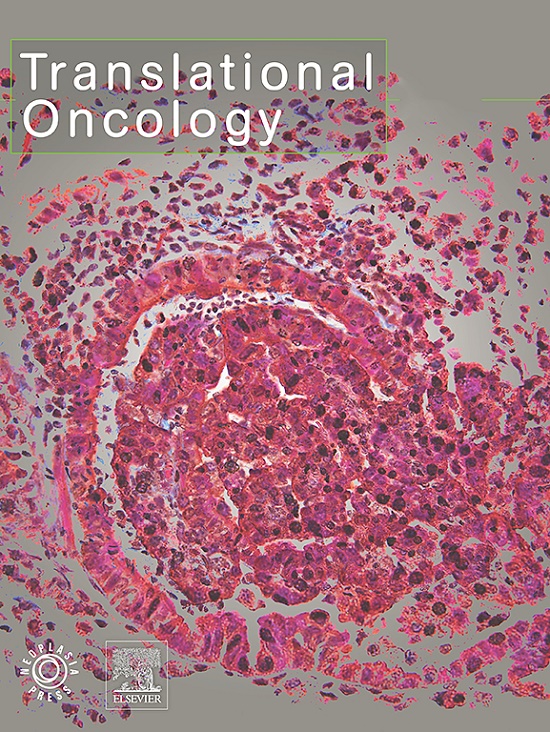将血清 MUC17 鉴定和验证为筛查胃上皮内瘤变的无创预警生物标记物
IF 5
2区 医学
Q2 Medicine
引用次数: 0
摘要
背景胃上皮内瘤变(GIN)的早期诊断和治疗对于提高胃癌(GC)患者的生存率至关重要。方法对GEO数据库中的scRNA数据、TCGA数据库中的泛癌症数据以及外分泌蛋白基因列表进行了综合分析,以确定GIN的非侵入性生物标志物。利用 scRNA-seq 数据分析、IHC 和 Elisa 验证了该生物标志物在不同病理阶段临床患者血清和组织中的表达情况。它在胃癌发生前的 GIN 中上调,而在其他肿瘤中下调,具有很高的 GC 特异性。血清 MUC17 用于区分慢性胃炎(CG)与低度上皮内瘤变(LGIN)、高度上皮内瘤变(HGIN)和早期胃癌(EGC)的曲线下面积值分别为 0.8788、0.8544 和 0.9513。此外,与 GIN 相比,胃溃疡(GU)、胃神经内分泌肿瘤(GNET)和胃肠道间质瘤(GIST)的血浆 MUC17 水平明显较低。这些研究结果表明,血浆 MUC17 水平有望成为 GIN 和 EGC 患者的筛查生物标记物,有效识别需要进一步进行胃镜检查的高危人群。本文章由计算机程序翻译,如有差异,请以英文原文为准。
Identification and validation of serum MUC17 as a non‐invasive early warning biomarker for screening of gastric intraepithelial neoplasia
Background
The early diagnosis and treatment of Gastric Intraepithelial Neoplasia (GIN) are pivotal for improving the survival rates of patients with gastric cancer (GC). Regrettably, reliable noninvasive biomarkers for GIN screening are currently lacking.
Methods
mRNA data from the GEO database, pan-cancer data from the TCGA database, and a gene list of exocrine proteins were subjected to integrated analysis to identify a noninvasive biomarker for GIN. The scRNA-seq data analysis, IHC and Elisa were employed to validate the expression of the biomarker in the serum and tissues of clinical patients across different pathological stages.
Results
MUC17 has been identified as a non-invasive diagnostic marker for GIN. It is upregulated in GIN prior to the onset of gastric carcinogenesis and downregulated in other tumors, with high GC specificity. The area under the curve values of serum MUC17 for differentiating chronic gastritis (CG) from low-grade intraepithelial neoplasia (LGIN), high-grade intraepithelial neoplasia (HGIN), and early gastric cancer (EGC) were 0.8788, 0.8544, and 0.9513, respectively. Additionally, low plasma MUC17 levels were found to be significantly lower in gastric ulcer (GU), gastric neuroendocrine tumor (GNET), and gastrointestinal stromal tumor (GIST) compared to GIN. The AUC for differentiating between GIN and GU, GNET, or GIST was 0.7803, 0.9244 and 0.9796, respectively.
Conclusions
These findings suggest that plasma MUC17 levels hold substantial promise as a screening biomarker for individuals with GIN and EGC, effectively identifying high-risk groups that necessitate further gastroscopy.
求助全文
通过发布文献求助,成功后即可免费获取论文全文。
去求助
来源期刊

Translational Oncology
ONCOLOGY-
CiteScore
8.40
自引率
2.00%
发文量
314
审稿时长
54 days
期刊介绍:
Translational Oncology publishes the results of novel research investigations which bridge the laboratory and clinical settings including risk assessment, cellular and molecular characterization, prevention, detection, diagnosis and treatment of human cancers with the overall goal of improving the clinical care of oncology patients. Translational Oncology will publish laboratory studies of novel therapeutic interventions as well as clinical trials which evaluate new treatment paradigms for cancer. Peer reviewed manuscript types include Original Reports, Reviews and Editorials.
 求助内容:
求助内容: 应助结果提醒方式:
应助结果提醒方式:


